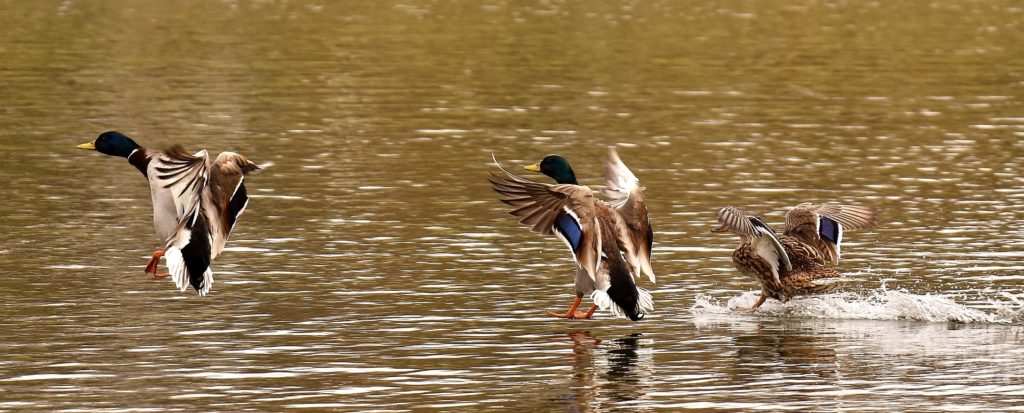From the avid hunter to land owners with an enthusiasm for wildlife conservation, there are certain practices and management tools that can increase the number of migrating waterfowl and shorebirds visiting your ponds, lakes and wetlands.
Increasing the number of migrating waterfowl that stopover in your pond annually has many benefits:
- attracting migrating waterfowl improves your pond's contribution to wildlife conservation, it provides excellent bird watching and photography opportunities,
- and, it increases your land’s value as a hunting lease by providing multiple seasons to hunt.
- there are even Federal incentives to manage for waterfowl habitat (see links below) for ponds, small lakes, and wetlands in locations with suitable habitat.
Provide a Sense of Security for Migrating Waterfowl
Most importantly, an attractive pond for migrating waterfowl provides them a feeling of safety and security. Ducks will not feel safe enough to stop for rest and food during their journey if there is no vegetative cover, or if the water body is too close to human infrastructure. Vegetative cover and isolation give ducks a sense of security and entice them to stop and stay longer. Selecting the right plant species and mixes to propagate can play a big role in determining the quality of habitat for ducks. Retaining emergent aquatic vegetation such as cattails, American pond weed, American bur reed, bulrush, blue-flag, arrowhead, horsetail, primrose, and woody species like buttonbush and bald cypress can provide excellent cover for waterfowl.
Have an Ample Food Source for the Migrating Species

Food availability is another key factor in attracting and retaining wintering waterfowl. Sedges, ryes, duckweed, duck potato, smartweed, sago pond weed, water lilies, and button-bush can provide vegetative barriers from predators and food for wintering waterfowl. Retaining trees that produce small acorns or seeds that ducks can consume is also beneficial, but unless you are starting a new pond, planting trees may be unnecessary. If you have an established pond or wetland with trees, then more than likely there will be species that can withstand seasonal inundation like cypress, pecan, various oaks, willow, buttonbush, and wax myrtle which are all good for duck cover.
Create an Inviting Setting for the Waterfowl
The structure of your aquatic system can play a big role in duck occupancy. Shallow wetlands and flooded timber provide dabbling ducks with feeding grounds, whereas areas with deeper water adjacent to shallow areas with cover will benefit diving ducks. Constructed wetlands and shallow ponds that utilize moist soil management with valves, risers, and spillways can ensure the water level is ideal for the ducks you are trying to attract. Using such devices can also allow you to manage unwanted vegetation in the summer by drawing the water all the way down. Designing new ponds to have gradually sloping edges in isolated shallow areas will facilitate growth of aquatic vegetation, whereas steep drop-offs inhibit such growth.
Snag retention and proper placement of artificial nesting structures can increase your population of resident southern duck species like wood ducks and black bellied whistling ducks. See my post of proper placement of nest boxes prior to deploying them on your land, because improper placement can inadvertently decrease local populations.
Pond Size Matters to Migrating Waterfowl
Lastly, the size of your water body and the time committed to management are deciding factors in how many ducks your land will attract. Resist the urge to harvest birds at every opportunity. Doing so will help retain more birds for longer periods. Choose a specific time frame for harvests or let your land go un-hunted every other year to help attract more waterfowl. Many birds that survive the barrage of hunting pressure during their journey will remember the “haven” they survived on the previous year and they will bring their buddies with them!
Information on Federal wetland conservation incentives can be found on the Natural Resource Conservation Service’s (NRCS) website. Additional resources can be found on the Texas Parks and Wildlife website.
For questions or comments on your own experience with waterfowl on your pond feel free to contact me at Joshua@PondKing.com and thank you for your interest in waterfowl management!




